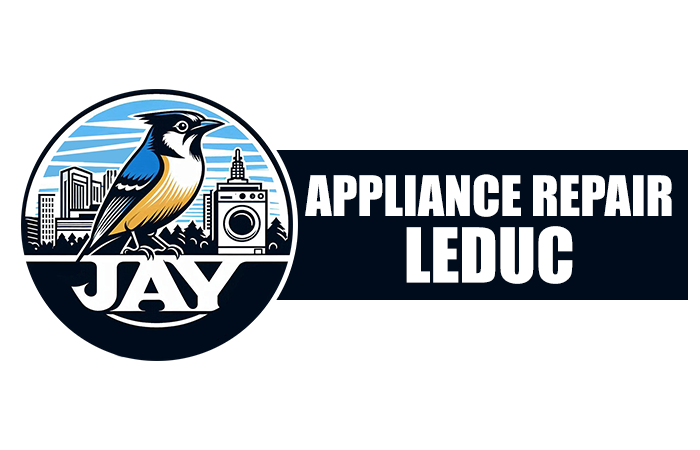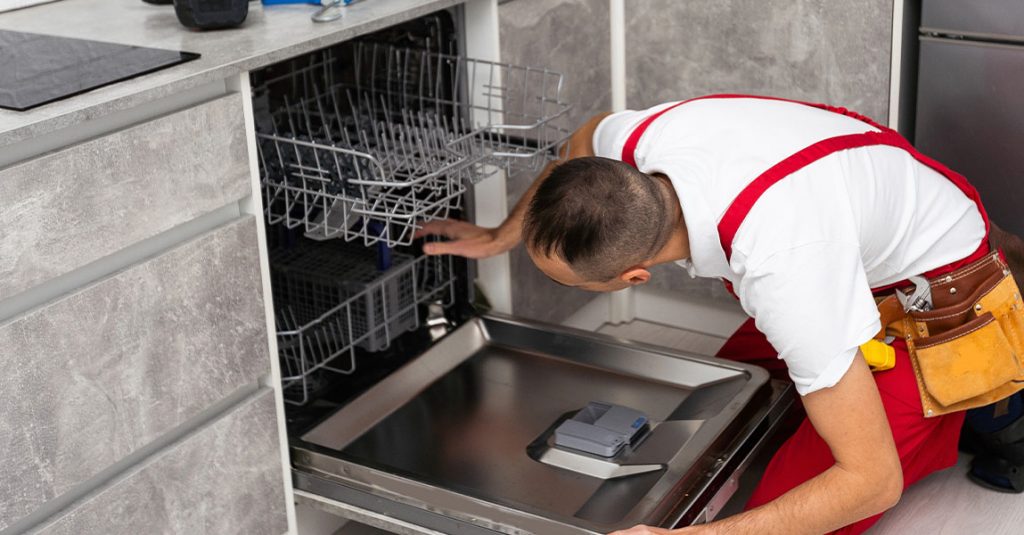The Basics of Dishwasher Drainage Issues
When a dishwasher finishes its cycle and you open the door only to find a puddle of water at the bottom, it’s more than an inconvenience. It’s a warning. Something in the drainage system isn’t doing its job. That is to say, standing water signals an internal problem that must be diagnosed quickly. One of the most common causes behind this issue is a blocked drain pump.
So, how does a dishwasher drain system work? Firstly, once a wash cycle is complete, the machine routes dirty water out through the drain hose via the pump. In addition, this pump moves water out forcefully enough to clear the line and ensure your dishes stay clean and dry. When that flow stops or slows down, leftover water stays trapped inside the appliance.
Common Symptoms of a Clogged Drain Pump
Before jumping to conclusions, it’s essential to identify signs that specifically point to a pump blockage. You might notice water sitting in the tub after every cycle. In other words, even if you run the dishwasher again, that water won’t clear out. Most importantly, your dishes come out dirty or still wet, especially on the bottom rack.
Unusual noises from the unit may also hint at internal blockage. For instance, if the pump struggles to spin or is obstructed, it can emit a low grinding or humming sound. In addition, a foul odor can develop over time, caused by food particles rotting in stagnant water. If these symptoms occur, the drain pump is often the culprit.
We recommend looking into appliance repair services in Leduc when symptoms persist or worsen. Timely inspection can help avoid damage to the motor and pump housing.
What Causes a Drain Pump Blockage?
There are several reasons why a dishwasher drain pump may become blocked. Food debris is the primary offender. However, broken glass, seeds, and small bones also end up in the drain and create blockages. As a result, these particles collect inside the pump or get lodged between the impeller blades, disrupting drainage.
Another cause is accumulated grease. Greasy residue may harden over time, restricting water movement. In the same vein, detergents that don’t fully dissolve may leave clumps that restrict the flow. If the dishwasher’s filter system is dirty or missing, those materials make their way directly into the pump.
Therefore, regular maintenance is essential. That includes cleaning filters, wiping gaskets, and running high-heat rinse cycles to clear grease buildup. If these steps aren’t enough, it’s time to assess the pump directly or schedule dishwasher repair in Leduc for expert diagnosis.
How to Check and Clean the Drain Pump
We strongly recommend unplugging the appliance or switching off its circuit breaker before beginning any inspection. Meanwhile, gather a screwdriver, a towel, and a shallow tray to catch water. That is to say, prepare for a small mess when you remove the lower access panel.
Once you access the drain pump, inspect the impeller blades for trapped debris. Likewise, feel around gently for small bones, glass, or seeds. If the impeller doesn’t spin freely, that’s a strong indication of blockage. Clean it using a cloth and warm water. In addition, check the surrounding hoses for any residual build-up or obstruction.
Some modern units include a removable drain pump filter. Remove and clean this filter under warm running water, making sure all soap scum and debris are gone. After that, reassemble the unit, restore power, and run a rinse cycle to verify drainage is restored. If water still lingers, our team suggests booking service through the contact page for hands-on assistance.
What Happens If You Ignore the Problem?
Leaving a blocked drain pump unaddressed causes more than just pooled water. Eventually, electrical components may short out due to moisture buildup. Consequently, the appliance may refuse to start at all or keep failing mid-cycle. This can affect circuit boards, sensors, and safety switches.
In addition, mold and bacteria will thrive in stagnant water. Above all, this poses health concerns, especially in a kitchen environment. You might notice that even clean dishes smell unpleasant. Moreover, the dishwasher’s efficiency drops, which means energy waste and repeat cycles that drive up utility costs.
Letting a blockage persist also shortens the overall lifespan of the unit. That is to say, pumps and motors under strain often burn out prematurely. When this happens, it’s no longer a matter of maintenance but full component replacement. JAY Appliance Repair frequently sees this in homes where early signs were ignored.
Preventive Maintenance Tips
Preventing pump blockages starts with better dishwasher habits. Firstly, always scrape food debris from plates before loading them. While pre-rinsing isn’t necessary with most modern units, heavy residue should never be left on. In addition, avoid overloading the bottom rack, as it interferes with water circulation and drainage.
Secondly, clean your dishwasher’s filter regularly. That is to say, the filter catches particles before they reach the pump. When it clogs, water starts backing up. Many owners forget this small but vital part of routine upkeep.
Every few months, run a dishwasher cleaner through an empty cycle. This helps dissolve grease, soap film, and mineral deposits. Likewise, wipe the door seals and clean the drain basin at the bottom of the tub. If you’re not sure what’s safe for your appliance, the appliance repair Leduc professionals can guide you.
When Professional Repair Is Necessary
DIY troubleshooting helps in many cases, but there are situations when calling a technician is smarter and safer. For example, if you’ve cleaned the pump and filters but the problem remains, the issue could lie deeper. Some blockages occur inside the drain hose or where it connects to your sink’s garbage disposal.
Moreover, internal electrical failures can stop the pump from receiving power. In those cases, testing for continuity with a multimeter is necessary. That is a task better suited for trained professionals. In the same vein, replacing a faulty drain pump involves electrical disconnection, careful mounting, and compatibility checks.
Our team has handled countless cases like this, and we understand how to restore your appliance safely. At this stage, we recommend reaching out through the repair contact form if your dishwasher continues to leave water behind even after cleaning attempts.
Final Thoughts on Clogged Drain Pumps
It’s easy to underestimate a bit of water in your dishwasher after a cycle. However, ignoring that water can lead to rust, mold, and appliance failure. Therefore, catching the issue early and confirming whether the drain pump is blocked makes all the difference.
If you’re unsure, inspect the pump yourself or seek professional help before further damage occurs. In conclusion, consistent maintenance and timely repairs ensure your dishwasher operates efficiently and your kitchen stays clean.
JAY Appliance Repair is always here when you need dependable service and advice on keeping your appliances running at their best.
Frequently Asked Questions
Why does my dishwasher leave water at the bottom?
This usually indicates a drainage issue. It could be a clogged drain pump, a blocked hose, or a dirty filter. Start by checking and cleaning each component carefully.
Can I unclog the drain pump myself?
Yes, if you’re comfortable opening the dishwasher and accessing internal parts. Make sure to unplug it first and remove visible debris with care.
How often should I clean the dishwasher filter?
We suggest cleaning it at least once a month. However, if you use your dishwasher daily or often cook greasy meals, inspect it more frequently.
Is a noisy dishwasher a sign of a pump problem?
It can be. Grinding or humming sounds often point to an obstruction in the pump or impeller. It’s best to investigate early before the issue worsens.
What should I do if cleaning doesn’t solve the problem?
If the water still won’t drain after you’ve cleaned the pump and filter, you may need a professional diagnosis. Internal hose clogs or electrical issues might be involved.

